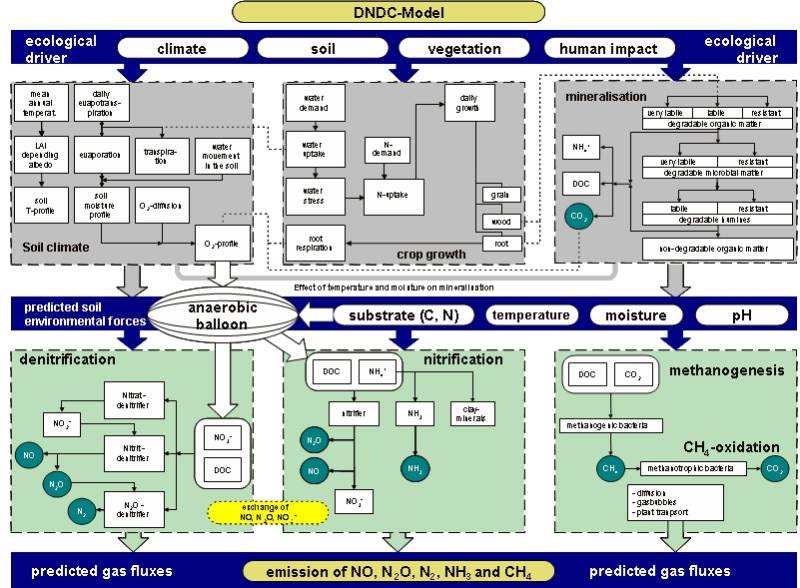Selected environmental indicators at 1x1 km grid resolution- DNDC link and Statistical Meta Model from DNDC
Main Contributors for DNDC link: Adrian Leip
Main Contributor for statistical meta model: Wolfgang Britz, Adrian Leip
DNDC for DeNitrification-DeComposition is a computer simulation model of carbon and nitrogen biogeochemistry in agro-ecosystems. The model can be used for predicting crop growth, soil temperature and moisture regimes, soil carbon dynamics, nitrogen leaching, and emissions of trace gases including nitrous oxide (N2O), nitric oxide (NO), dinitrogen (N2), ammonia (NH3), methane (CH4) and carbon dioxide (CO2). At JRC, the DNDC model is currently used by the Climate Change Unit, Greenhouse gases in Agriculture, Forestry and other Land Uses Action of JRC.
For represenative combination of crops and soils for each NUTS II regions, DNDC runs were performed, systematically changing mineral and organic application rates, and allowing for irrigation or not. Each run covered 100 years to allow for a stabilization of the carbon and nitrogen content of the soil. The observations from those about 100.000 simulation runs were used to estimate statistical regression models per crop for selected output variables of DNDC:
- Water and nitrogen leached
- Gaseous emission of nitrogen: NO, N2, NH3
- Water transpirated and water evaporated
- Crop yields
using soil and climatic parameters, as well as potential yields and fertilizer application rates as explanatory variables. In more then 70% of the cases, the R2 was above 85% with all variables at a significance level above 0.1%. Given that perfect calibration of the DNDC crop yields at the estimated fertilizer application rates to those estimated from MARS potential yields and scaled to be consistent to the one observed at NUTS II level would be impossible, the potential yields are re-calibrated in the forecasting step.
More information
Wolfgang Britz and Adrian Leip:
A statistical meta model of DNDC to estimate nitrogen fate and the water cycle at 1x1 km grid at Pan-European scale, JRC, 2007 (pdf, foils)
Leip, A., Marchi, G., Koeble, R., Kempen, Britz W. and Li, C.:
Linking an economic model for European agriculture with a mechanistic model to estimate nitrogen losses from cropland soil in Europe
Biogeosciences, 5(1): 73-94A
Last Updated:Tuesday, October 28, 2008
